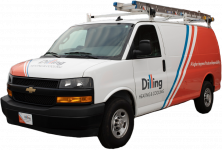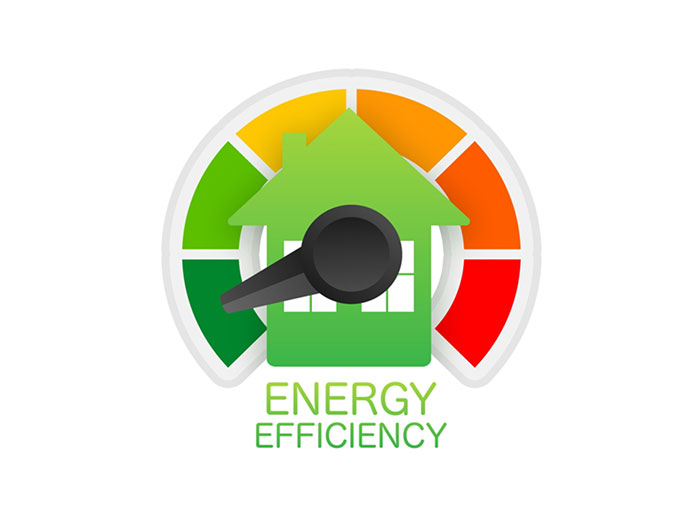 During the coldest months of the year, your heating and cooling system will work extra to keep your home comfortable. In addition to putting strain on your system, this can significantly increase your energy expenditures.
During the coldest months of the year, your heating and cooling system will work extra to keep your home comfortable. In addition to putting strain on your system, this can significantly increase your energy expenditures.
However, just because the temperature has fallen doesn’t mean you’ll have to pay more for energy, especially if you take a few steps to make your home more energy-efficient. With rising energy bills and increased concerns about climate change, striking a balance between staying warm and conserving energy is critical.
Whether you want to save on utility bills or reduce your carbon footprint, this article is for you. In this article, we’ll explore how Dilling Heating and Cooling can assist you in controlling your heating costs and ensuring your electric bill remains manageable.
Top 8 Ways to Control Energy Efficiency of Heating in Cooler Months
-
Smart Thermostat
Smart thermostats can help you save energy on heating and cooling without replacing your HVAC system. Smart thermostats can switch off or reduce heating and cooling while you are sleeping or away, and they are available in various models to accommodate your weekly schedule.
A smart thermostat can save about 8% on heating and cooling costs. Savings may vary depending on your local climate, individual comfort preferences, the number of occupants in your property, and the type and age of your HVAC system.
To further increase the effectiveness of your heating and cooling system, some smart thermostats even inform you when to update air filters or when there are issues with the HVAC system.
-
Sealing Air Leaks
Regarding house energy efficiency, air leaks are a significant issue. While your windows are a substantial source of air leaks, they are not the only place in your home where leaks occur.
Going through your house carefully and sealing leak areas is an excellent approach to improving home energy efficiency. You can hire a proactive property manager in Baltimore to schedule maintenance essentials this fall season.
Weather stripping around your doors will eliminate many leaks in your home. It would help to inspect your home’s ductwork for spots where you expect leaks or already occurring and then caulk these areas.
-
Insulation Upgrades
Improving heating energy efficiency during the cooler months begins with better insulation. Upgrading your home’s insulation creates a barrier that keeps heat from escaping and cold air from penetrating. Concentrate on crucial areas such as the attic, walls, and flooring.
Insulation upgrades keep your living spaces comfortably warm and reduce the strain on your heating system, leading to cost savings. High-quality insulation materials like fiberglass or foam can significantly reduce heat loss. It’s a long-term investment that pays returns in better comfort and lower energy usage, making it the best method for energy efficiency.
-
Energy-Efficient Windows
During the cooler months, energy-efficient windows are essential in controlling heating energy efficiency. These windows are designed with innovative technology to reduce heat transfer between the inside and outside of your home. They frequently have double or triple glass, low-emissivity coatings, and gas fills between the panes to improve insulation.
Energy-efficient windows help maintain a comfortable indoor temperature by reducing heat loss and eliminating cold drafts, reducing your heating system’s workload. This, in turn, reduces energy usage and heating costs. Upgrading to energy-efficient windows is a worthwhile investment that not only saves energy but also improves the overall comfort and sustainability of your home.
-
Zone Heating
Zone heating is a successful approach for improving energy efficiency during the cooler months. You can save energy and money by concentrating your heating efforts on occupied rooms and minimizing warmth in underused areas. Individual room heaters, electric fireplaces, or programmable thermostats have general uses in different zones of your home with this strategy.
Not only does zone heating allow you to create personalized comfort in various living spaces, but it also minimizes the need to heat your entire home consistently. This targeted approach ensures your home stays warm where it matters most while curbing unnecessary energy consumption in cooler, unoccupied areas.
-
Upgrade your HVAC system
An essential first step in increasing energy efficiency during the colder months is to upgrade your HVAC system. Consider purchasing a new, high-efficiency furnace or heat pump that uses cutting-edge technologies to maximize heat production while reducing energy consumption.
Consider models with multi-stage heating capabilities and variable-speed motors, which enable precise temperature control tailored to your specific demands. Proper sizing is crucial, ensuring the system matches your home’s requirements without unnecessary energy waste. Regular maintenance and timely filter replacements further optimize performance. A well-designed, updated HVAC system keeps you home and significantly reduces energy bills.
-
Unplug Devices
When it comes to enhancing energy efficiency during the colder months, unplugging electronics when not in use is an essential yet frequently overlooked strategy. Even while off, many devices use standby power, causing unnecessary energy waste.
You can decrease your electricity fee by unplugging chargers, appliances, and other devices to stop this phantom energy usage. Consider using power strips to disconnect several devices at the same time. This minor habit modification not only saves energy but also increases the lifespan of your electronics. Awareness of these means that your efforts to reduce energy use are thorough, substantially influencing your environmental footprint and household expenses.
-
Reverse Ceiling Fans
Reversing ceiling fans is an easy yet efficient way to increase energy efficiency during the cooler months. You may gently circulate warm air that naturally rises by changing the direction of your ceiling fan blades. This redistributes hot air held near the ceiling, ensuring it reaches the living space below.
This helps to maintain a stable and comfortable temperature while reducing the strain on your heating system. Reversed ceiling fans are instrumental in spaces with high or vaulted ceilings, where warm air tends to accumulate. This slight modification can result in significant energy savings and increased comfort in your home during the cooler months.
Final Thoughts
Controlling energy efficiency in heating during cooler months is critical for a more sustainable and cost-effective home. You can achieve a healthy balance of warmth and savings by implementing the tips mentioned in this article.
These measures, which range from insulation upgrades to the smart use of technology, enable you to stay warm while being environmentally friendly. As we face the challenges of the colder seasons, these energy-efficient practices will keep you warm and help lower your energy bills and environmental effects, resulting in a warmer and brighter future.
With the help of Dilling Heating and Cooling, you can implement smart strategies to keep your home warm without breaking the bank.





